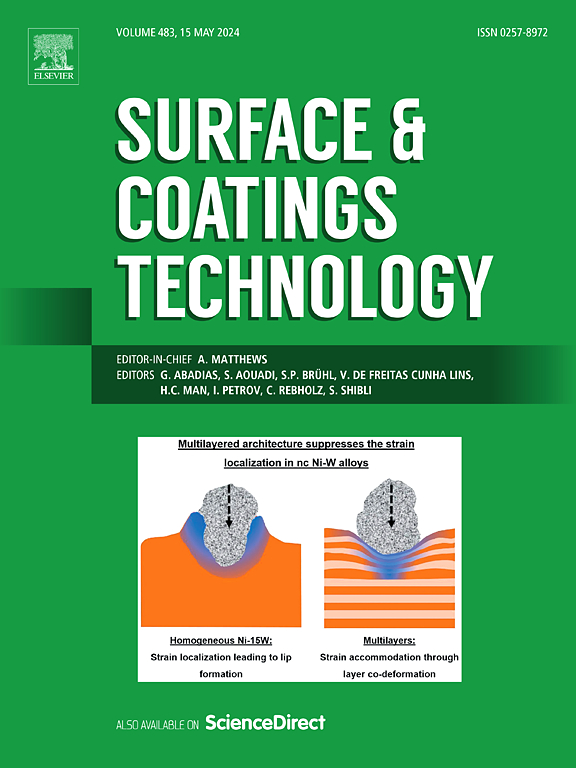Electronic structure properties of PbX (X = S, Se)/graphene van der Waals heterojunctions: A first-principles study
IF 5.3
2区 材料科学
Q1 MATERIALS SCIENCE, COATINGS & FILMS
引用次数: 0
Abstract
Van der Waals heterojunctions (vdWHs) exhibit richer physical properties compared to their individual components, making them advantageous for emerging optoelectronic applications such as infrared photodetection. Due to the high infrared absorption coefficient of lead sulfide (PbS) and lead selenide (PbSe) as well as the ultra-high carrier mobility of graphene (Gr), the vdWH formed between these materials are suitable for fabricating high-performance infrared photodetectors. However, studies on the hybrid structures of PbS and PbSe with graphene have primarily focused on experimental outcomes, with insufficient theoretical discussion on the electronic structural characteristics. In this study, first-principles methods were employed to investigate the electronic structure properties of PbS/Gr and PbSe/Gr vdWHs, including their band structures, work functions, and charge density distributions. The results reveal that the band structure of each material remains largely unchanged upon forming the heterojunction, and the overall band structure of the heterojunction can be regarded as a superposition of the isolated components. Importantly, there is a significant overlap in the band structures of PbS and PbSe, individually, with that of graphene near the Fermi level, which facilitates the charges transport between them. Moreover, opposite local electric fields and inhomogeneous charge distribution were found at the heterojunction interface, suggesting an inspiring path to further optimize the charge transport at the nanoscale. Such findings are not only beneficial for improving the interface engineering of PbX (X = S, Se)/Gr-based photodetectors, but also provide illuminating insights into advancing the meticulous design of various optoelectronic devices with extensive vdWHs.
求助全文
约1分钟内获得全文
求助全文
来源期刊

Surface & Coatings Technology
工程技术-材料科学:膜
CiteScore
10.00
自引率
11.10%
发文量
921
审稿时长
19 days
期刊介绍:
Surface and Coatings Technology is an international archival journal publishing scientific papers on significant developments in surface and interface engineering to modify and improve the surface properties of materials for protection in demanding contact conditions or aggressive environments, or for enhanced functional performance. Contributions range from original scientific articles concerned with fundamental and applied aspects of research or direct applications of metallic, inorganic, organic and composite coatings, to invited reviews of current technology in specific areas. Papers submitted to this journal are expected to be in line with the following aspects in processes, and properties/performance:
A. Processes: Physical and chemical vapour deposition techniques, thermal and plasma spraying, surface modification by directed energy techniques such as ion, electron and laser beams, thermo-chemical treatment, wet chemical and electrochemical processes such as plating, sol-gel coating, anodization, plasma electrolytic oxidation, etc., but excluding painting.
B. Properties/performance: friction performance, wear resistance (e.g., abrasion, erosion, fretting, etc), corrosion and oxidation resistance, thermal protection, diffusion resistance, hydrophilicity/hydrophobicity, and properties relevant to smart materials behaviour and enhanced multifunctional performance for environmental, energy and medical applications, but excluding device aspects.
 求助内容:
求助内容: 应助结果提醒方式:
应助结果提醒方式:


